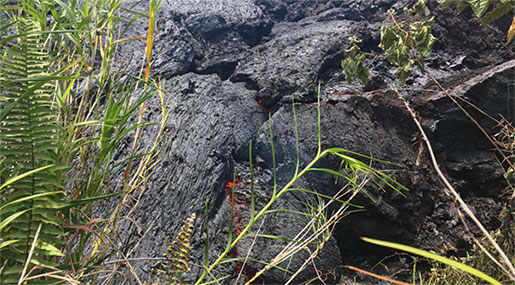
Quakes Damage Roads As Ash Spews From Hawaii Volcano

Local Editor
Earthquakes were damaging roads and buildings on Hawaii's Big Island on Wednesday as ash emissions streamed from Kilauea volcano.

The strongest shaking was recorded around 8:30 a.m., measured as a 4.4-magnitude earthquake. The floor of the summit crater has also dropped about three feet, as the threat of a strong, explosive eruption at the top of the volcano loomed. The ground was deflating as the crater's lava levels fell, causing stress faults around the crater to move, resulting in the earthquakes. More were expected.
Ash spewed from the summit at Hawaii's Kilauea volcano, though emissions decreased from Tuesday.
There were occasional bursts of ash coming from the crater causing ash to fall downwind to several communities, though there were only trace amounts, said the Hawaiian Volcano Observatory. Ash plumes on Tuesday had spouted as high as 12,000 feet into the air, scientists said.
These plumes are separate from the lava eruptions happening roughly 25 miles away from summit, where about 20 lava fissures have destroyed more than two dozen homes and forced the evacuation of about 2,000 residents.
Dense, large rocks roughly two feet in diameter were found in a parking lot a few hundred yards away from Kilauea's summit crater, which reflect the "most energetic explosions yet observed and could reflect the onset of steam-driven explosive activity," the Hawaiian Volcano Observatory said in a statement, and continues to monitor activity.
Scientists say earthquakes may shake loose rocks underground and open up new tunnels for lava to flow.
Cracks formed on a highway near the entrance to Hawaii Volcanoes National Park, said the Hawaii Police Department. Much of the park remains closed.
On Tuesday, the volcano discharged ash because of rocks falling into the summit, US Geological Survey geophysicist Mike Poland said.
"There is very little wind at the summit," he said. "The plume, it's not near as ashy as it was yesterday, and it's rising more or less vertically over the summit region."
Because of the ash, USGS scientists operated from a backup command center at the University of Hawaii at Hilo.
Poland did not have an immediate height on the plume Wednesday since scientists were not staffing the observatory at the summit. They will have to rely on remote observations, he said.
Source: News Agencies, Edited by website team
Comments
- Related News



